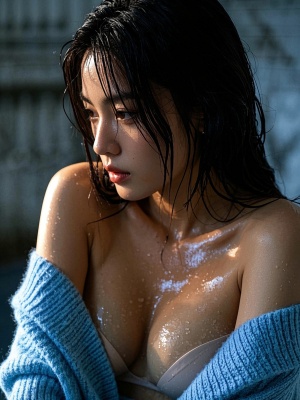Step-by-Step Guide to Group Portrait Photography
Group portrait photography can be both rewarding and challenging. Capturing multiple people in a single frame while ensuring everyone looks their best requires careful planning and execution. Whether you're photographing a family reunion, corporate event, or wedding party, this comprehensive guide will walk you through the essential steps to create stunning group portraits.
1. Planning Your Group Portrait
Proper planning is the foundation of successful group photography. Consider these key elements before your shoot:
Understanding Your Group
Before the shoot, gather important information about your subjects:
- Number of participants
- Age ranges (important for posing children and seniors differently)
- Special requirements (wheelchair access, etc.)
- Group relationships (family hierarchy, corporate structure)
Choosing the Right Location
Select a location that complements your group and purpose. For family portraits, consider meaningful locations like homes or parks. For corporate groups, office settings or professional studios work best. Check out our family scene guide for location inspiration.
2. Technical Setup for Group Portraits
Camera Equipment
Use the right gear to ensure sharp, well-composed images:
- DSLR or mirrorless camera with manual controls
- Wide-angle lens (24-70mm works well for most groups)
- Tripod for stability, especially in low light
- External flash or reflectors for even lighting
Camera Settings
Recommended settings for group portraits:
- Aperture: f/8-f/11 for sufficient depth of field
- Shutter speed: Minimum 1/125s to freeze movement
- ISO: Keep as low as possible to reduce noise
- Focus: Use single-point AF on the nearest subject's eyes
3. Posing and Composition Techniques
Effective posing can make or break a group portrait. Follow these professional techniques:
Creating Depth and Dimension
Avoid flat, two-dimensional arrangements by:

- Staggering people at different distances from the camera
- Using steps, benches, or natural terrain for varied heights
- Positioning taller people toward the center and back
Natural Interaction
Capture genuine connections by:
- Encouraging light physical contact (shoulder touches, holding hands)
- Prompting natural interactions ("whisper to your neighbor")
- Taking candid shots between posed arrangements
For wedding groups, our wedding photography guide offers specialized posing tips.
4. Lighting Solutions for Groups
Lighting challenges and solutions:
| Problem | Solution |
|---|---|
| Uneven lighting across group | Use multiple light sources or reflectors to balance |
| Harsh shadows | Diffuse light with softboxes or shoot in open shade |
| Mixed lighting temperatures | Set custom white balance or correct in post-production |
According to Popular Photography, proper lighting can improve group portraits by up to 60% in professional appearance.
5. Post-Production and Delivery

Final touches make your group portraits shine:
Basic Editing Workflow
- Color correction and white balance adjustment
- Exposure adjustments for consistency
- Minor retouching (remove temporary blemishes)
- Sharpening for web or print output
AI Enhancement Options
Modern tools like our AI Photo Enhancer can automatically improve group portraits by:
- Enhancing facial details while maintaining natural looks
- Balancing exposure across all faces
- Reducing noise in low-light shots
Conclusion
Mastering group portrait photography requires a combination of technical skill, artistic vision, and people management. By following this step-by-step guide - from careful planning through final delivery - you'll be equipped to create professional-quality group portraits that capture special moments beautifully. Remember that practice makes perfect, so don't hesitate to experiment with different techniques and compositions.
For more photography tips and AI-powered editing solutions, explore our photography blog and discover how technology can enhance your creative workflow.